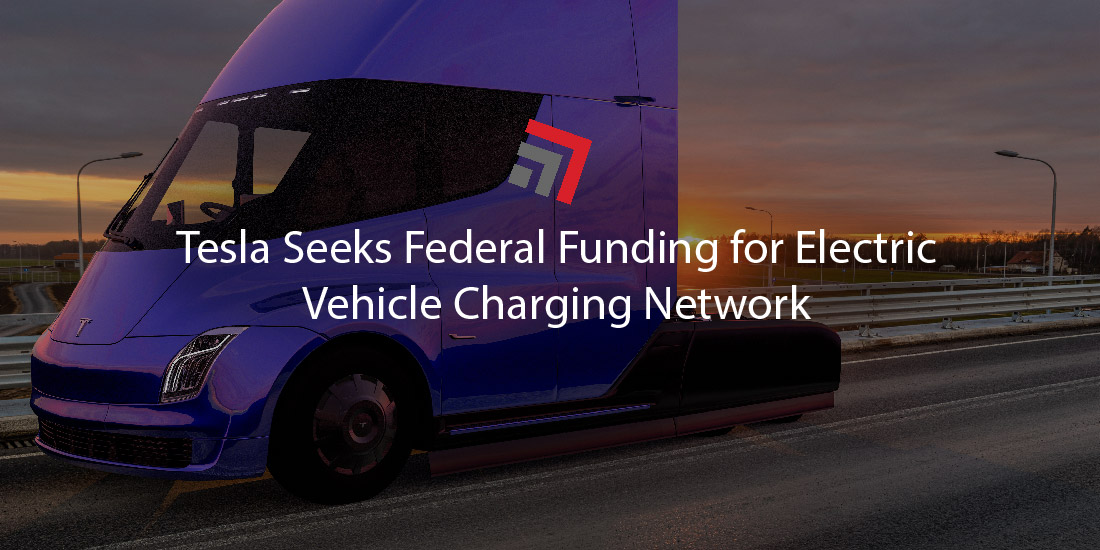Automaker Tesla has displayed yet another display of supercharged ambition and wants Uncle Sam to help pick up the tab.
Tesla is pursuing a figure shy of $100 million from the U.S. to construct nine electric semi-truck charging stations along a roughly 1,800-mile route between Texas’ southern border and Northern California.
An 1,800-mile route with nine charging stations
According to emails seen by Bloomberg News, Tesla advised each station would be equipped with eight EV chargers for Tesla-brand semis, while having another four available for competitors and their respective fleets.
The nine stations would be spread out across the expansive corridor with locations in the following cities: Fremont, CA; Bakersfield, CA; Compton, CA; Indio, CA; Phoenix, AZ; San Simon, AZ; Sparks, TX; Fort Stockton, TX; and Laredo, TX.
This proposal was sent by email from Tesla executives to the Texas Department of Transportation. The automaker asked state officials to write a letter in support of the project to include in its application for federal funding, which was submitted in June.
These executives suggest the project could qualify for federal grants (that will be disbursed as part of the Bipartisan Infrastructure Law) given its aim to modernize the country’s transit systems.
Improving infrastructure and embracing modern technologies are notable pillars from 2021’s major legislation.
A zero-emission freight corridor
If this proposal becomes a reality, it would be the country’s maiden big-rig charging network for long-distance freight movement. The route, which stretches from Fremont, CA to Laredo, TX, would invite long-haul EV trucking across the America’s Southwest, while also serving shorter, lucrative, regional hauls throughout Arizona, California, and Texas.
Trucking remains the world’s largest producer of greenhouse gas (GHG) emissions and, according to Visual Capitalist, the industry is pinned as the fastest-growing contributor to GHGs worldwide.
Regulators have been tormented trying to limit the transport sector’s carbon footprint so Tesla’s proposal for this zero-emission freight corridor is an enticing investment to consider.
It’s a waiting game for funding
Even with a promising pitch, Tesla will still have to take a number and play the bureaucratic waiting game.
Covered last week in a previous blog, the U.S. DOT has plans to rollout a new office to oversee and properly disburse the department’s multitude of grants its been allotted.
As of now, the Federal Highway Administration, an agency under the DOT, is reviewing all applications relating to highway matters, including Tesla’s. It expects to announce the winners later in the year.
In addition to the near $100 million of federal funding the automaker is seeking, Tesla plans to invest $24 million of its own for the project.
Tesla has not announced whether it would still pursue the project without a federal grant.
Tesla’s nearshoring strategy
The route’s waypoint in the border city of Laredo is not a random act, but a logistics pawn in the automaker’s nearshoring manufacturing strategy.
Laredo is about 240 miles from Tesla’s Austin headquarters and 150 miles from the build site of its new factory in Nuevo Leon, Mexico.
Tesla has been at the forefront of a greater trend of American companies bringing their production and sourcing from overseas markets to closer ones across the border in Mexico.
Closer supply chains mean less transit time and, in theory, less volatility. As an automaker, Tesla was not immune to struggles in the past couple of years with component shortages overseas.
While the automaker is admittedly having challenges with production—its CEO Elon Musk told stakeholders at an energy conference that the Tesla Semi likely won’t be produced in large volumes until next year—the move to concentrate its operations may prove effective in the long run.
Final Thoughts
A reasonable objection to Tesla receiving federal funding could be from the fact that the automaker has struggled to roll out its EV semis.
If the grant recipients are announced later this year, will regulators take into consideration that Tesla may not have enough vehicle capacity to warrant this proposed charging network? Will the automaker be pushed back in the line in favor of other projects?
Please contact us if you have any questions regarding this topic or any others in domestic logistics. In addition, stay up to date with weekly headlines from both trucking and rail via our Road Map newsletter.
More blogs like this:



Recent Comments